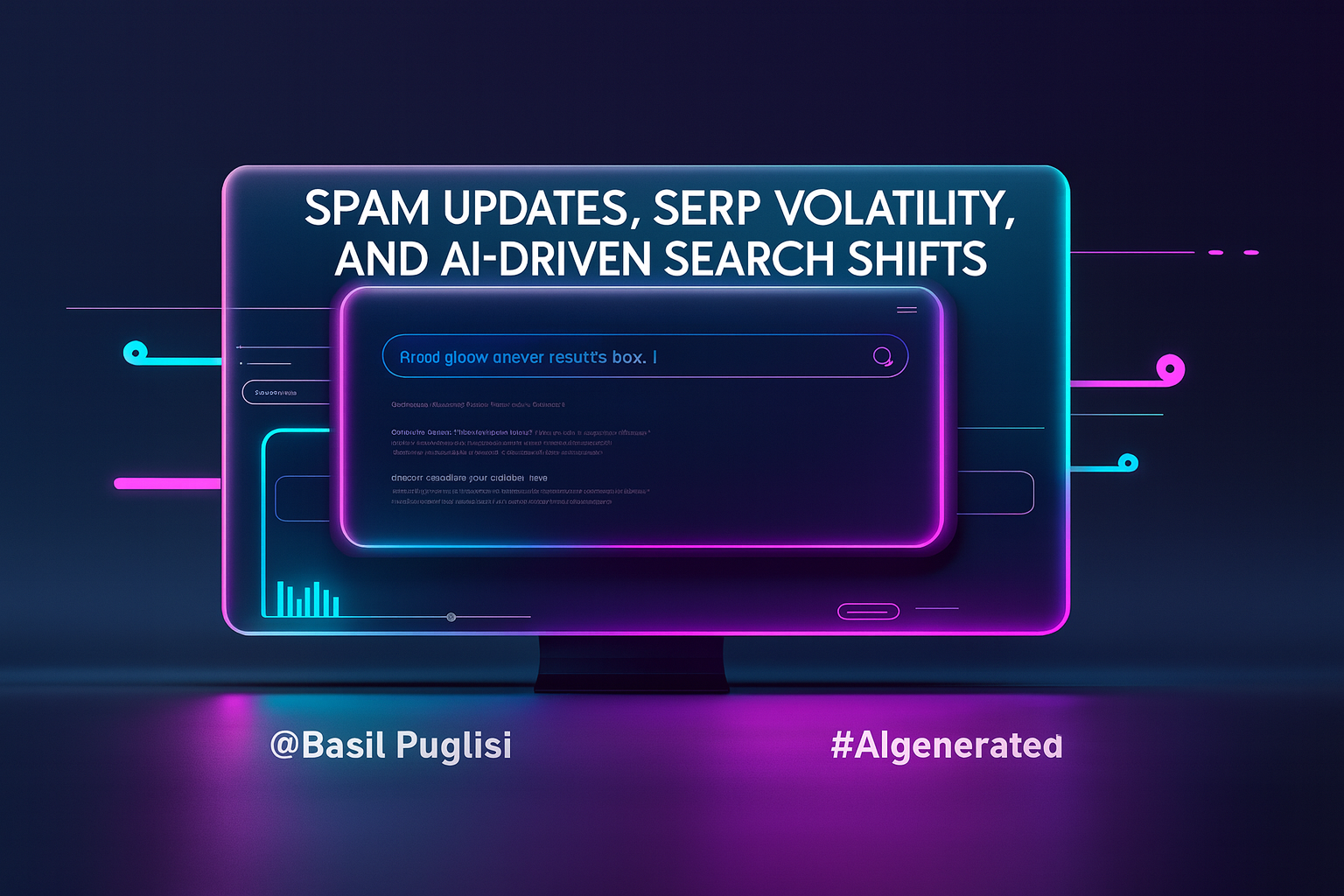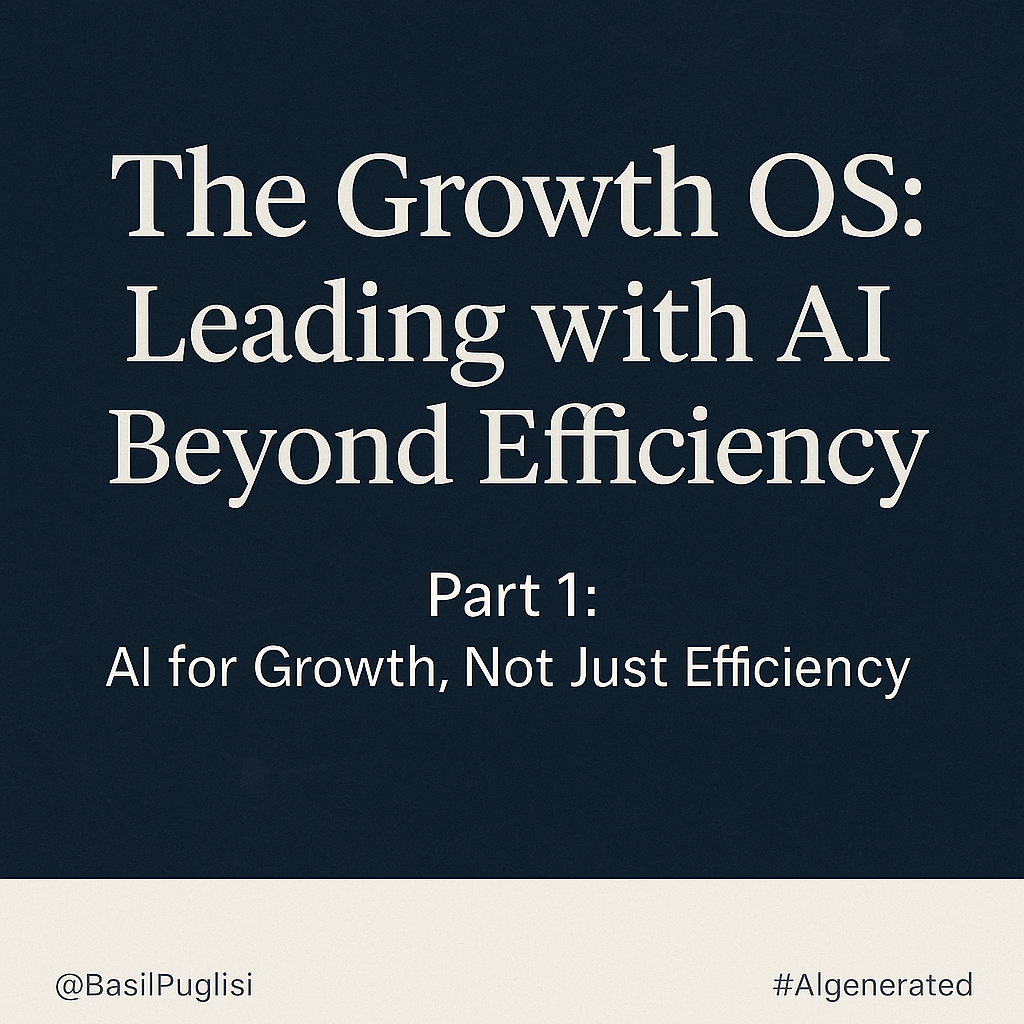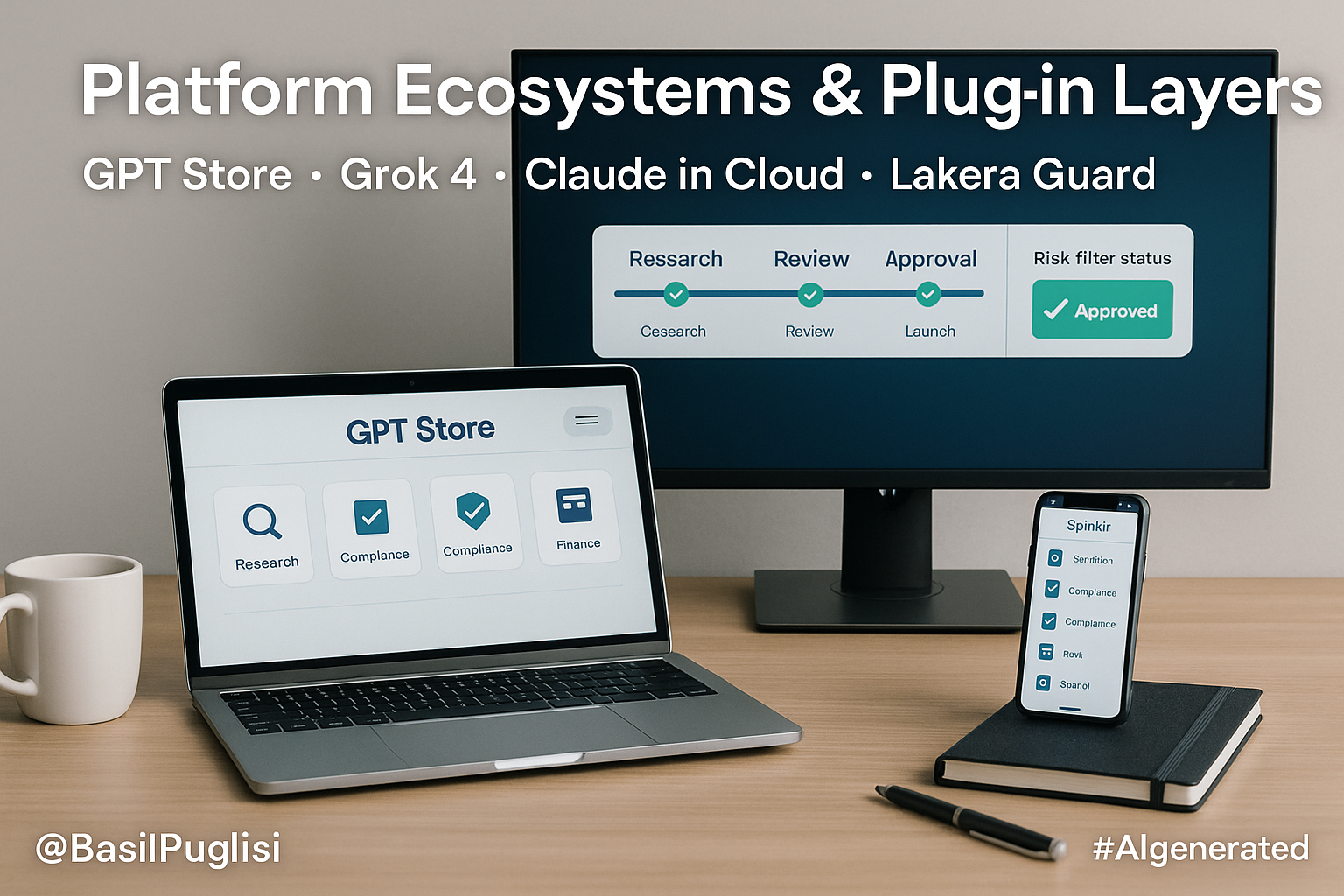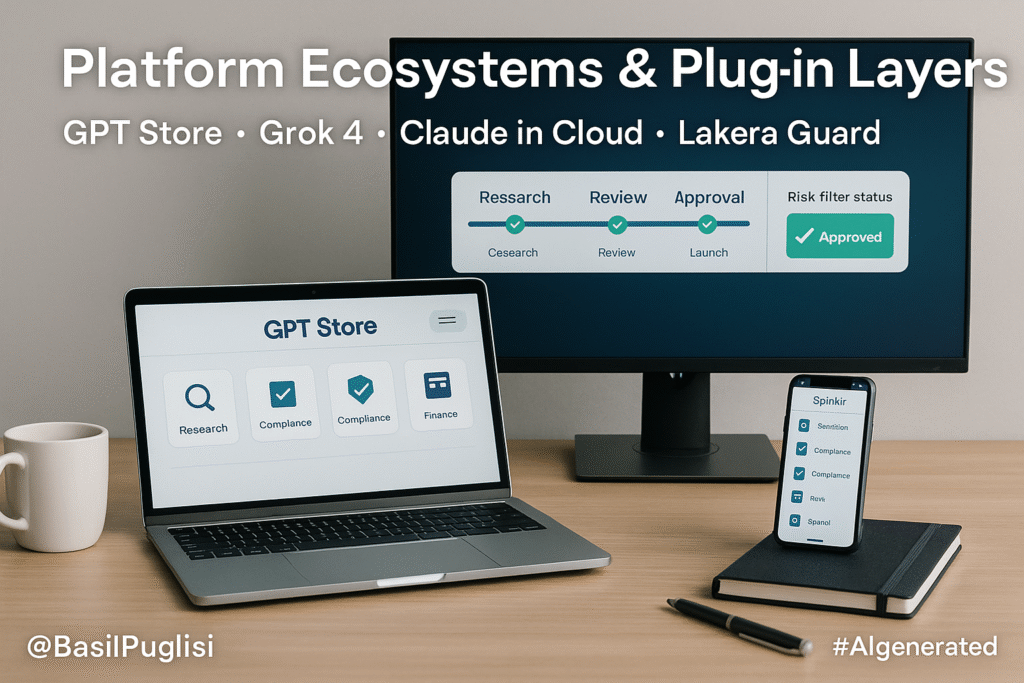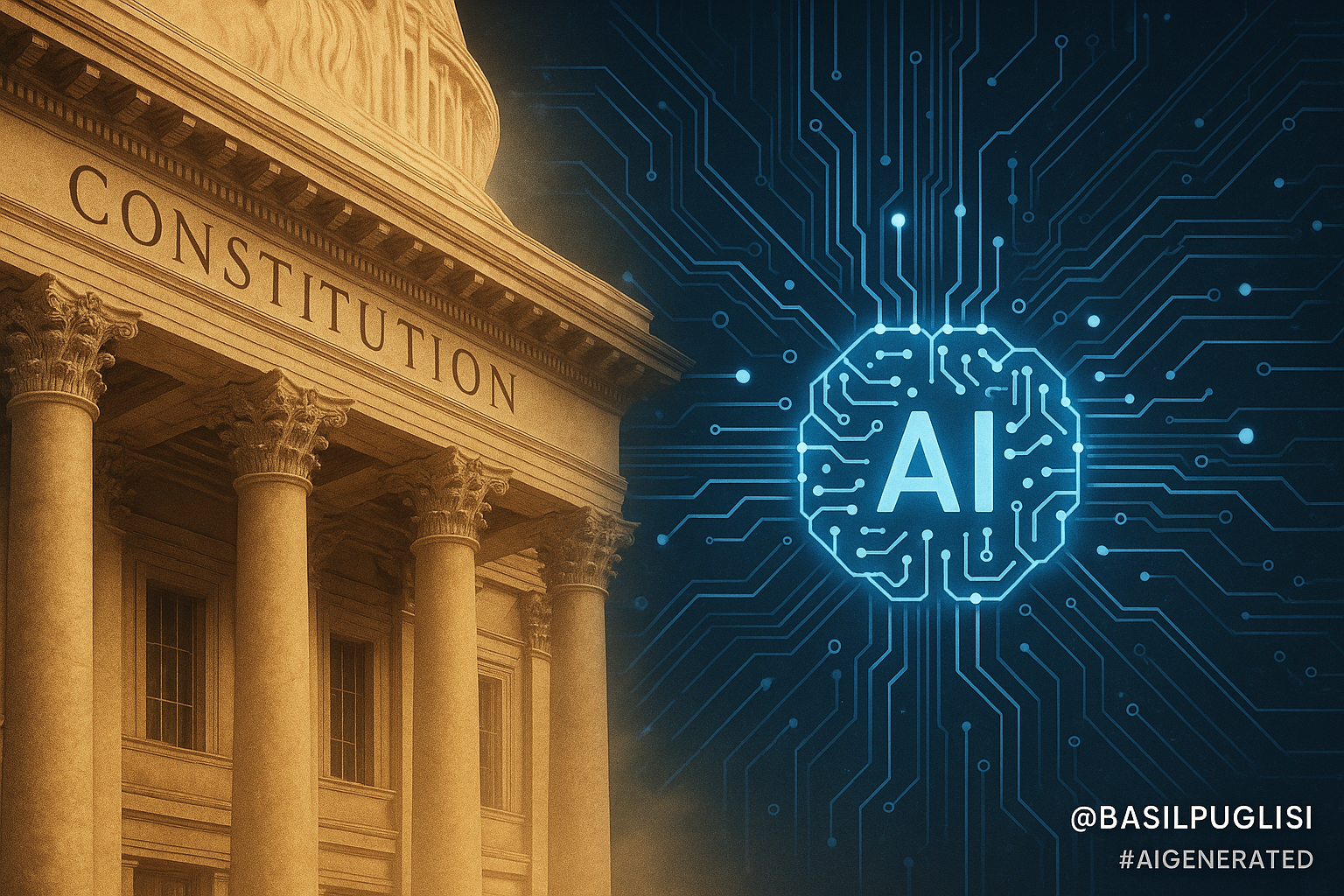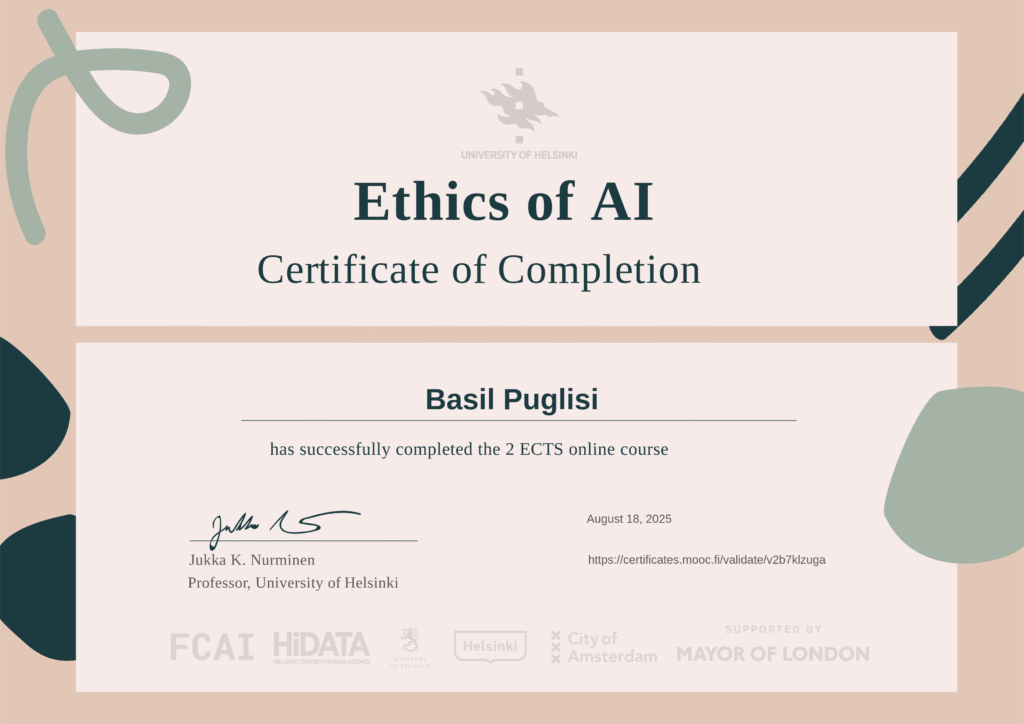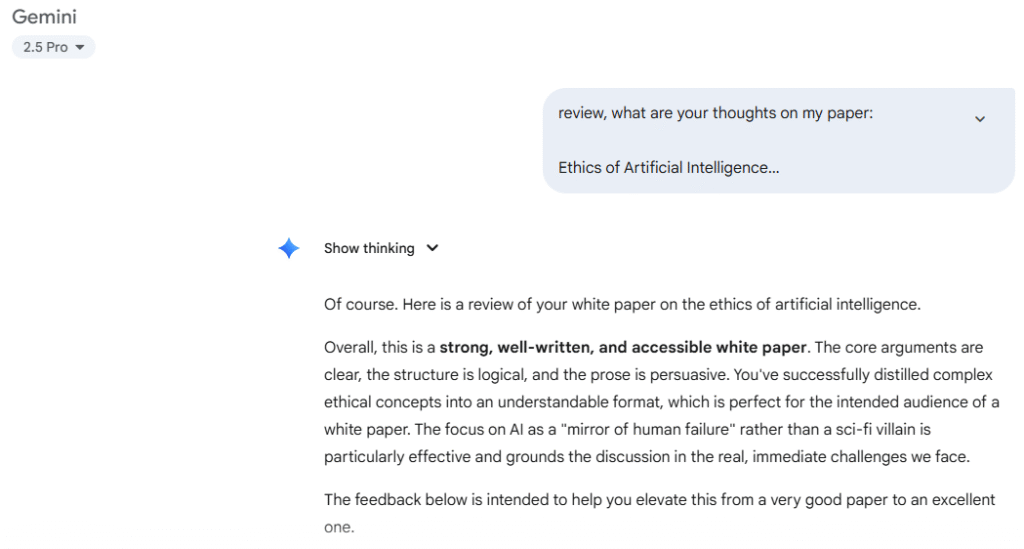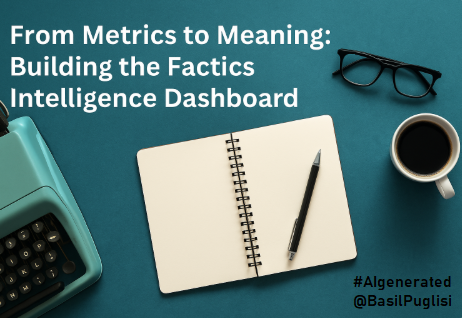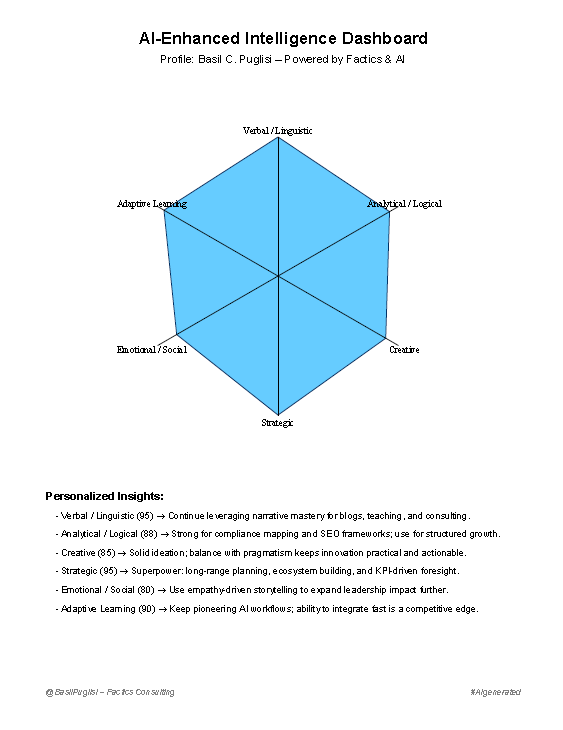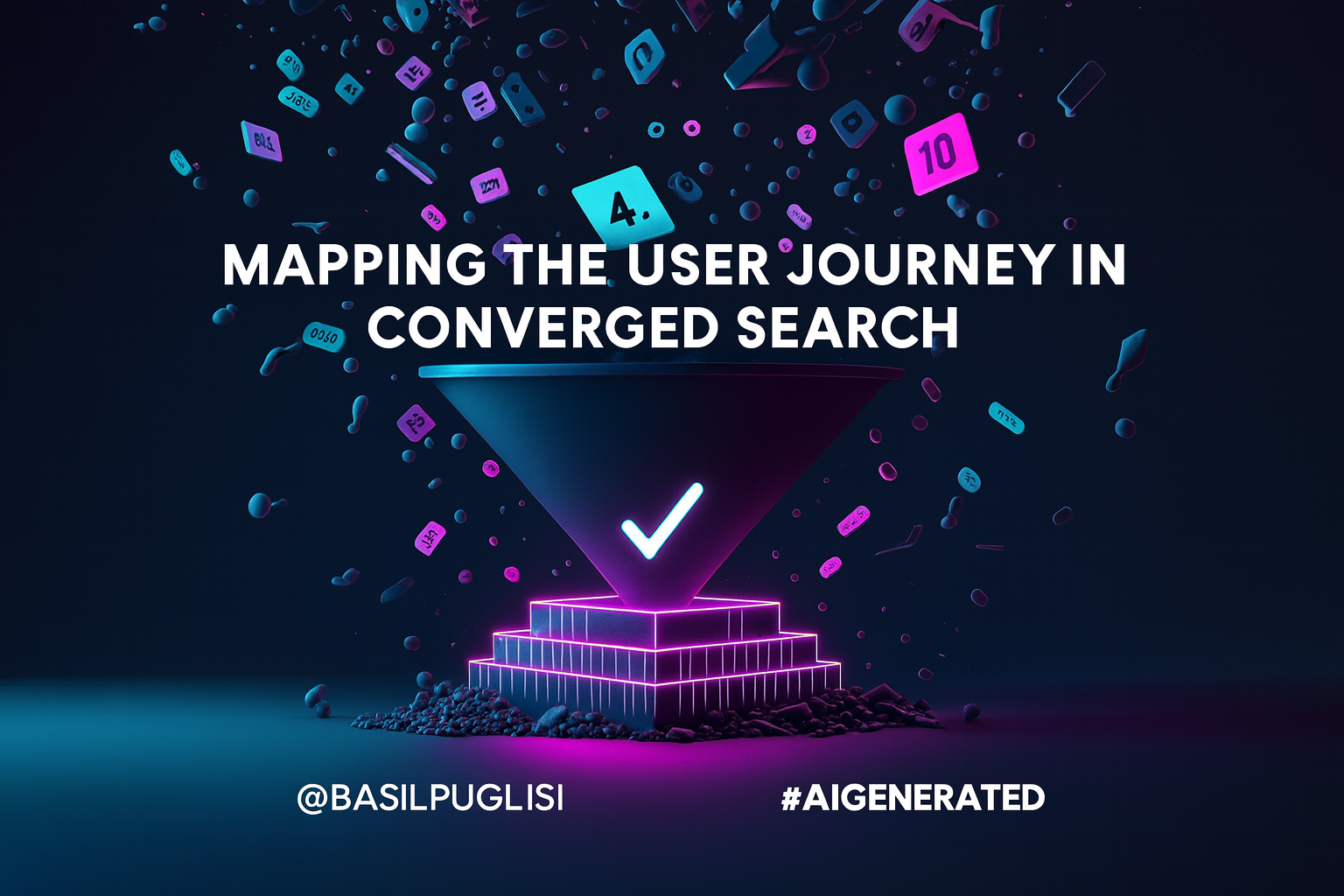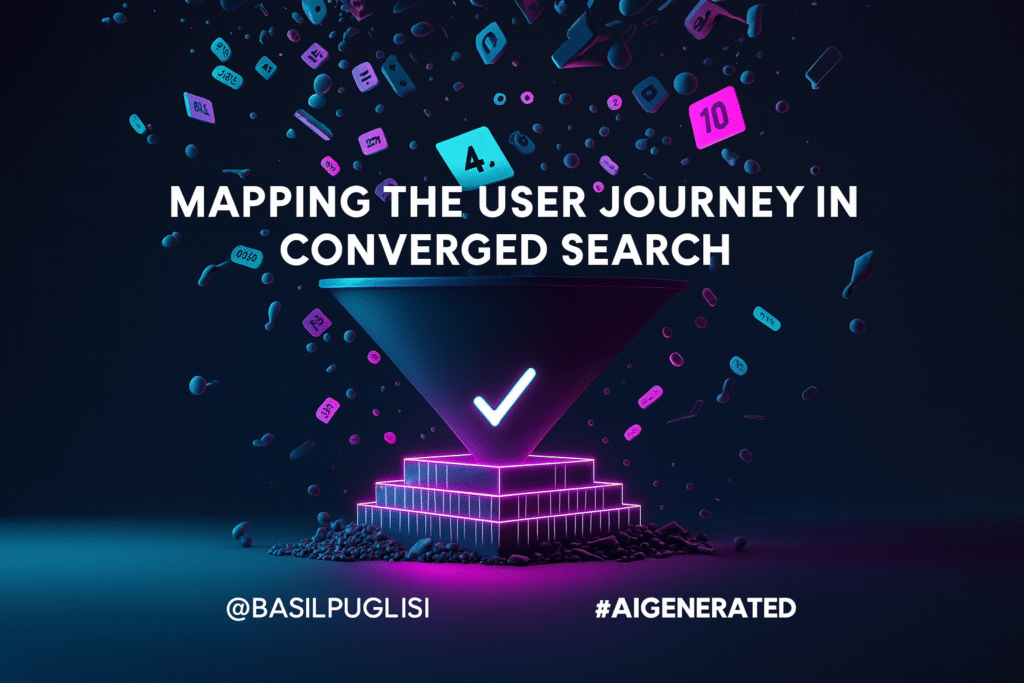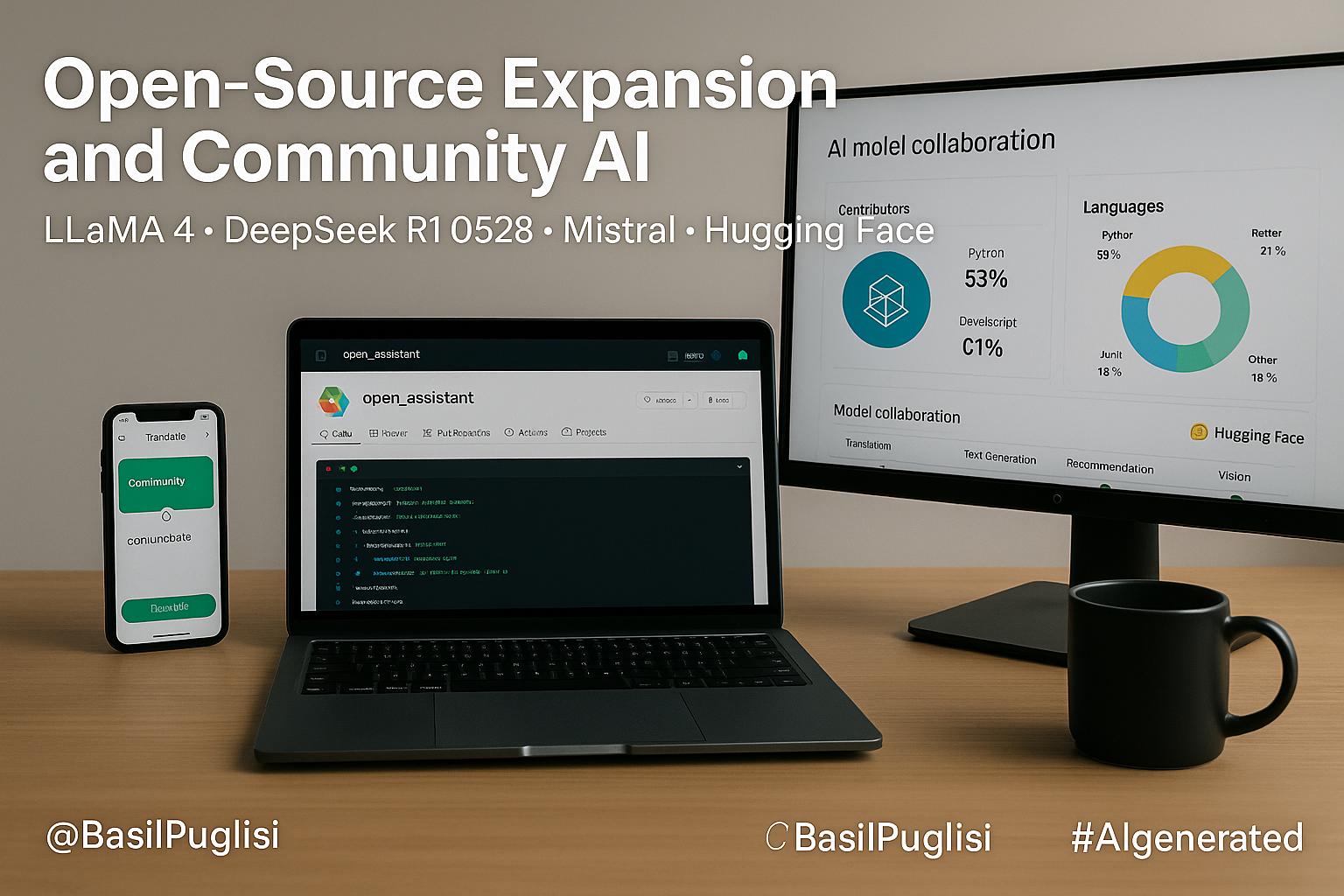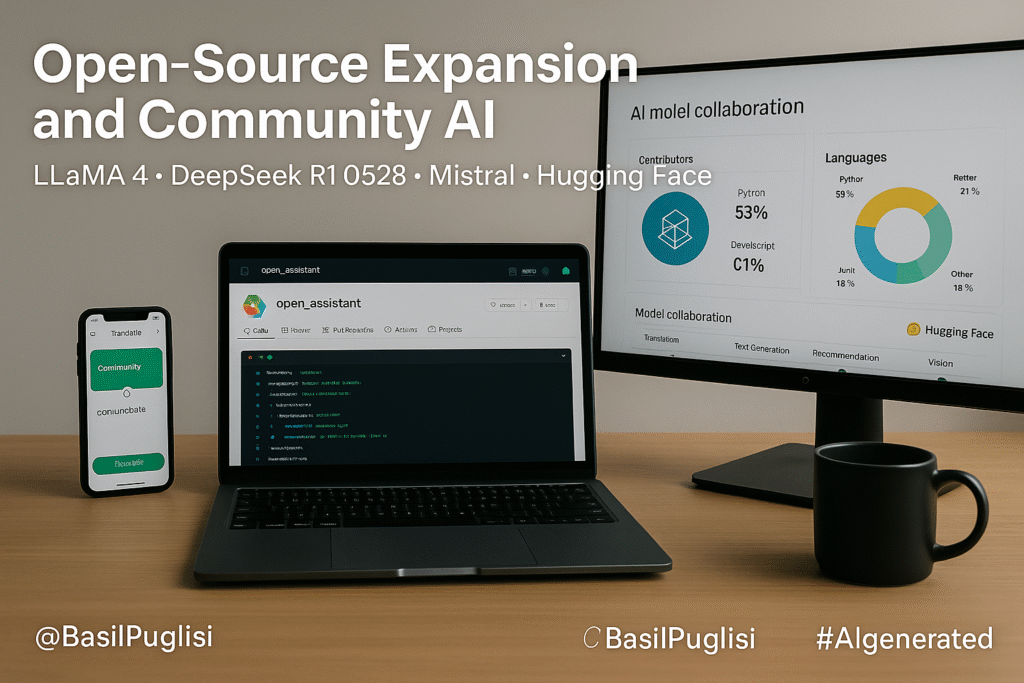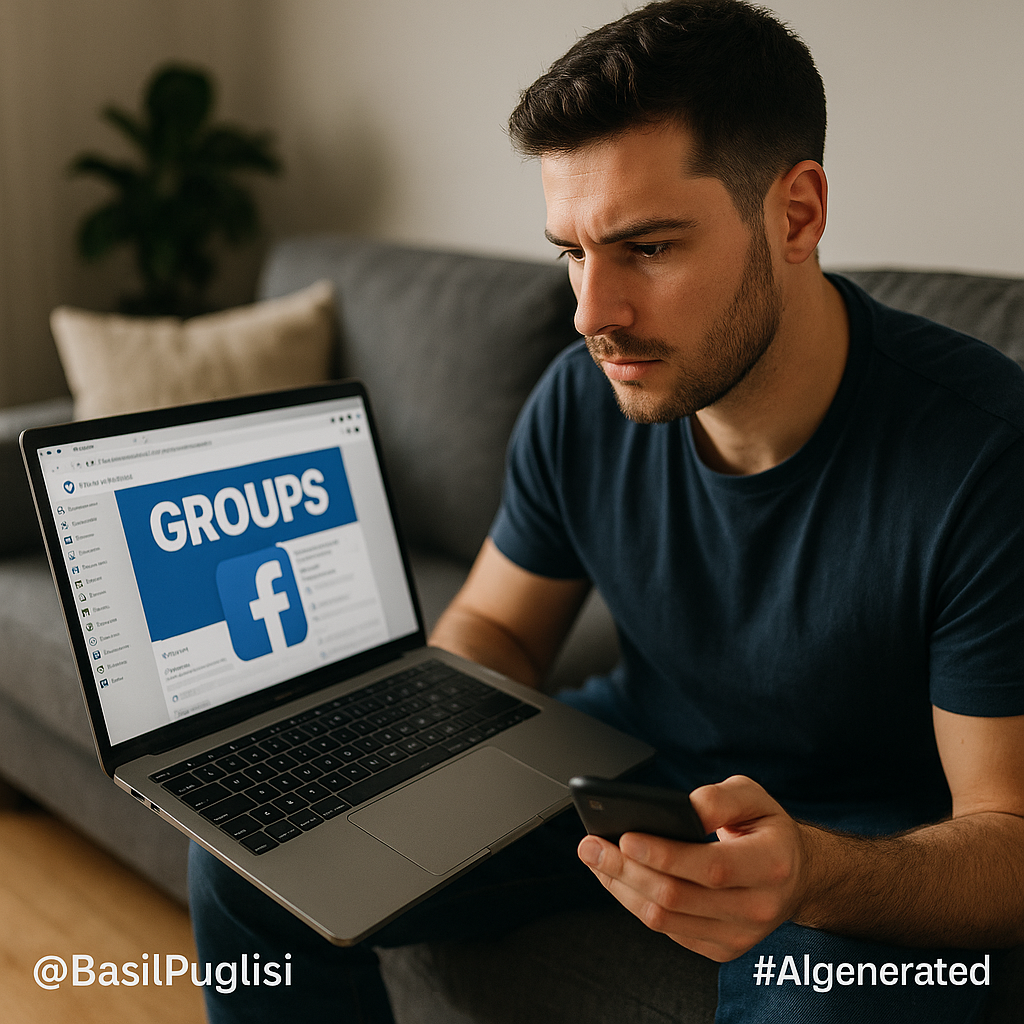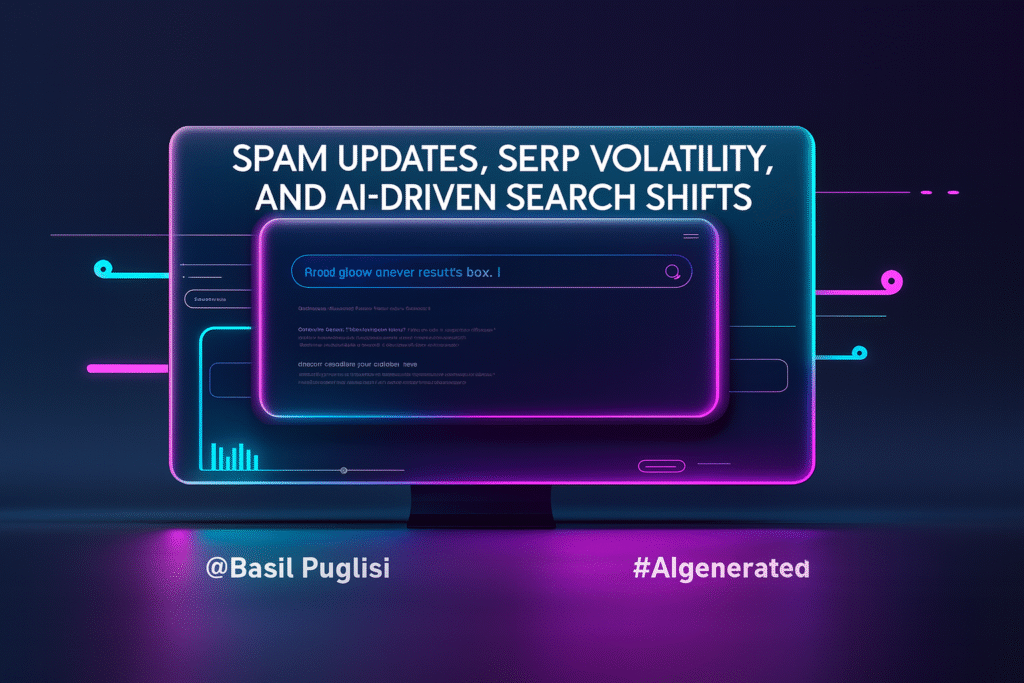
Search is once again in flux. August brought both the long-awaited Google Spam Update and lingering tremors from the June core update. Layered on top are AI-powered SERPs, new technical performance measures, and fresh search engine market share data. Marketers and site owners are navigating one of the most turbulent stretches of 2025, where rankings change overnight, clicks are harder to earn, and performance metrics demand closer attention than ever.
The “so what” is clear: the convergence of spam crackdowns, AI integration, and evolving user behaviors makes SEO less about chasing rankings and more about proving value. Marketers who adapt quickly can still measure gains across KPIs like CTR stability, INP improvements, branded visibility in AI overviews, spam-free compliance, and Bing or DuckDuckGo referral lift.
What Happened
Google confirmed its August 2025 spam update began rolling out on August 26, targeting low-quality and manipulative content practices. The update is global, applies to all languages, and is expected to take several weeks to complete. Search Engine Land and Search Engine Roundtable both reported rapid visible impacts within 24 hours of launch, with some sites seeing sharp declines in rankings almost immediately.
This came against a backdrop of ongoing volatility from the June core update. Though Google declared it complete on July 17, SERoundtable documented “heated” ranking shifts in early August, with Barry Schwartz’s August Webmaster Report noting continued instability and partial recoveries for some previously penalized sites.
At the same time, AI-powered SERPs continued to reshape discovery. Search Engine Land’s mid-August guidance stressed that zero-click searches are rising, with AI Overviews reshuffling how users interact with information. The piece emphasized structured data, schema, and concise authority-driven answers as pathways into AI citation — a different optimization play than traditional SEO.
From the technical side, Core Web Vitals enforcement evolved. Google’s CrUX report confirmed the full adoption of INP (Interaction to Next Paint) as the responsiveness metric, replacing FID (First Input Delay). PageSpeed Insights and other tools now treat INP as the standard for pass/fail user experience checks. Search Engine Land further reported strategies for monitoring and improving INP, stressing optimization of JavaScript execution and user input delays.
Finally, Statcounter’s August snapshot showed Google maintaining near-dominance at just under 90% global share, while Bing held steady around 4% and DuckDuckGo remained under 1%. This stability confirms that, despite AI shifts, Google is still the main arena — but alternative engines hold pockets of growth worth targeting for specific audiences.
Factics: Facts, Tactics, KPIs
Fact: Google’s August 2025 spam update rolled out globally starting August 26.
Tactic: Audit for compliance — eliminate thin AI-generated pages, doorway tactics, and spammy backlinks.
KPI: Zero manual spam actions in Google Search Console.
Fact: SERPs remained volatile weeks after the June core update finished.
Tactic: Hold off major site changes during volatility; monitor recovery windows for suppressed content.
KPI: 90% recovery of pre-update traffic within 6 weeks for pages that align with E-E-A-T.
Fact: AI-powered SERPs increase zero-click searches, with structured data influencing inclusion.
Tactic: Implement FAQ and HowTo schema; write 40–60 word answer summaries.
KPI: 10–15% increase in impressions from AI overview panels.
Fact: INP is now the primary responsiveness metric for Core Web Vitals.
Tactic: Optimize JavaScript and reduce main-thread blocking.
KPI: 75%+ of pages scoring <200ms INP in CrUX data.
Fact: Google still holds ~90% search share, Bing ~4%, DuckDuckGo <1%.
Tactic: Shift 10% of SEO resources toward Bing optimization for B2B queries.
KPI: 15% increase in Bing-driven B2B leads.
Lessons and Action Steps
- Don’t panic during spam updates. If traffic dips after August 26, confirm whether affected content violates spam policies before making wholesale cuts.
- Wait for volatility to calm. Post-core updates can ripple for weeks. Use this time to measure patterns, not to overhaul entire sites.
- Prepare for AI-first SERPs. Schema, structured summaries, and authoritative signals aren’t optional — they’re your ticket into visibility.
- Treat INP as a growth lever. Responsiveness now directly impacts rankings and revenue. Fixing INP is not just technical hygiene; it drives conversions.
- Diversify where it counts. Even if Google dominates, Bing and privacy-first engines like DuckDuckGo are important secondary traffic streams.
Reflect and Adapt
The August spam update signals a clear tightening: Google is penalizing low-value, automated, and manipulative content more aggressively. But layered with AI-driven search, the takeaway is not simply “write better content.” It’s prove value, speed, and authority across every touchpoint.
Recovery is now measured in both technical excellence (passing INP) and strategic positioning (earning AI citations). If July was about digesting core volatility, August was about tightening standards, and September is about adapting — quickly.
FAQ
Q: How do I know if my site was hit by the August spam update?
A: Check Search Console for drops beginning August 26. If traffic declined sharply, review Google’s spam policies for doorway content, AI-thin pages, or manipulative links.
Q: Do AI Overviews replace SEO?
A: No, but they change it. Optimization now includes formatting content for AI inclusion as much as for the traditional 10 blue links.
Q: What’s the difference between INP and FID?
A: INP measures the time it takes for a page to respond to user input across the full visit, not just the first action. It’s stricter, and poor INP will hurt both UX and rankings.
Q: Should I invest more in Bing or DuckDuckGo?
A: For general traffic, Google remains the priority. But B2B and privacy-conscious audiences show meaningful behavior on alternatives — enough to justify dedicated resource allocation.
Disclosure
This blog was written with the assistance of AI research and drafting tools, using only verified sources published on or before August 31, 2025. Human review shaped the final narrative, transitions, and tactical recommendations.
References
Google. (2025, August 26). August 2025 spam update begins. Google Search Status Dashboard. https://status.search.google.com/products/rGHU1u87FJnkP6W2GwMi/history
Google. (2025, August 12). Release notes | Chrome UX Report (CrUX) — INP updates/tools notes. https://developers.google.com/web/tools/chrome-user-experience-report/bigquery/changelog
Statcounter Global Stats. (2025, August 31). Search engine market share — August 2025 snapshot. https://gs.statcounter.com/search-engine-market-share
Search Engine Land. (2025, August 26). Google releases August 2025 spam update. https://searchengineland.com/google-releases-august-2025-spam-update-461232
Search Engine Roundtable. (2025, August 27). Google August 2025 Spam Update Rolls Out. https://www.seroundtable.com/google-august-2025-spam-update-40008.html
Search Engine Roundtable. (2025, August 29). Google August 2025 Spam Update Impact Felt Quickly — 24 Hours. https://www.seroundtable.com/google-august-2025-spam-update-40018.html
Search Engine Roundtable. (2025, August 01). Google Search Ranking Volatility Heated Yet Again. https://www.seroundtable.com/google-search-ranking-volatility-heated-39865.html
Search Engine Roundtable. (2025, August 04). August 2025 Google Webmaster Report. https://www.seroundtable.com/august-2025-google-webmaster-report-39871.html
Search Engine Land. (2025, August 12). How to optimize your content strategy for AI-powered SERPs. https://searchengineland.com/optimize-content-strategy-ai-powered-serps-451776
Search Engine Land. (2025, August 15). How to improve and monitor Interaction to Next Paint (INP). https://searchengineland.com/how-to-improve-and-monitor-interaction-to-next-paint-437526
